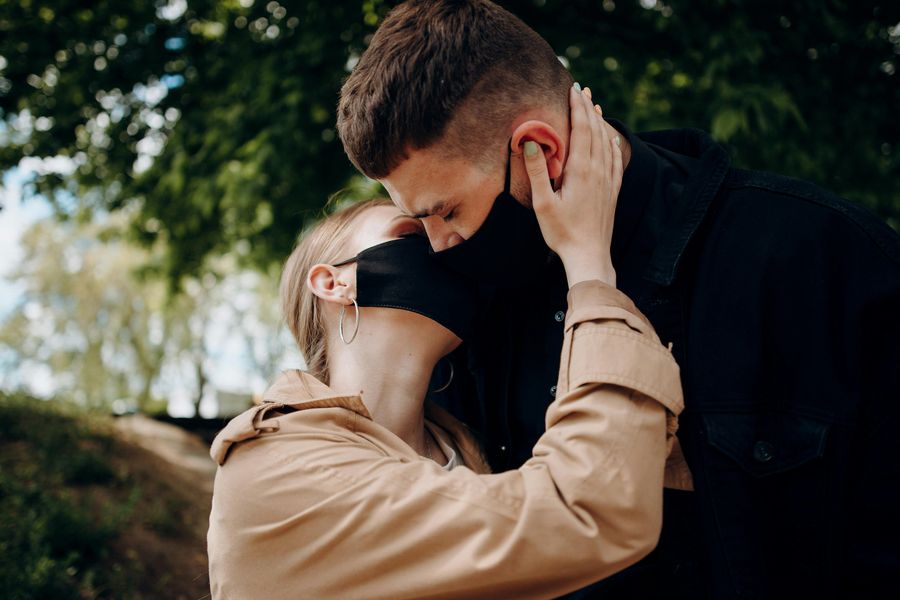Topic 1: How to Stop Thinking About Someone
Have you ever found yourself constantly thinking about someone, even if they’re not a part of your life anymore? It can be difficult to move on from someone, especially if you’ve had a long relationship or an intense connection.
But don’t worry, it’s not impossible to stop thinking about them. Here are some steps you can take to help you move on.
1. Acceptance and Grief: Realizing There Is Nothing Special Between the Two
The first step to healing is accepting that things have changed. By accepting that the person is no longer a part of your life, you can start to let go of the past and move forward.
Acknowledge your feelings of loss and allow yourself to grieve. Remember that it’s okay to feel sad, angry, or disappointed.
All these feelings are a natural part of the grieving process.
2. The Talk: Having a Conversation to Clarify One’s Position
If the reason why you can’t stop thinking about someone is due to a lack of closure, consider having a conversation with the person.
This is especially true if you feel that there was unfinished business between you two. By having a conversation, you can clarify your position and determine the other person’s views, which could help you move on.
3. Choose Your Battles: Focusing on One Problem at a Time, Avoiding Past Fights
If you tend to replay past arguments or mistakes in your head, it can be difficult to move on. Instead of focusing on everything that went wrong, concentrate on one issue at a time.
Think about what you could have done differently in that particular situation and use that knowledge to improve your decision-making in the future.
4. Put on Your Armor: Having a Support System, Belief in Oneself
It’s important to surround yourself with a supportive network of family and friends who can offer you encouragement and advice during this difficult time.
Lean on them as much as you need to and remember that you’re not alone. You should also believe in yourself and your ability to bounce back.
Allow yourself to learn from this experience and grow stronger as a result.
5. Distance and Strategy: Creating Space, Diverting Attention into Constructive Things
Creating distance between you and this person can be helpful.
This might mean unfollowing them on social media, avoiding certain places they frequent or taking a break from hanging out with mutual friends. Divert your attention by getting involved in constructive things such as taking up a new hobby or pursuing a long-term goal.
This can be a great way to distract yourself while improving yourself at the same time.
6. This is the War You Simply Cannot Lose: Fighting for One’s Happiness, Seeking Support from Family and Friends
Remember that your happiness is worth fighting for.
Don’t let someone else hold you back or define your worth. If you’re struggling to move on, seek support from loved ones and remind yourself that this is a battle you simply cannot lose.
By following these steps, you’ll be able to start the healing process, let go of the past, and move forward towards a brighter future.
Topic 2: Signs of Being in a One-Sided Relationship
Have you ever found yourself in a relationship where you’re the only one putting in the effort?
If so, you might be in a one-sided relationship. It’s important to recognize the signs of a one-sided relationship early on as it can be emotionally draining and prevent you from pursuing other relationships.
Here are some signs to watch out for.
1. All the Work in the Relationship: Feeling Responsible for Everything, Walking on Eggshells
If you find yourself feeling responsible for everything in the relationship, chances are it’s one-sided.
This might mean that you’re the only one making plans, initiating conversations, or trying to resolve conflicts. You might have to walk on eggshells or avoid bringing up issues to prevent arguments or discomfort.
2. Getting Calls Only When Needed: Calls Only for Benefit, Unanswered Texts
If you only hear from your partner when they need something, this is a sign of a one-sided relationship. They might only call or message you when they need a favor, money, or help with something.
If you find yourself constantly reaching out to them without getting a response, this could be another indication of a one-sided relationship.
3. Your Happiness Matters Too: Prioritizing Oneself, Not Settling for Less
In a healthy relationship, both parties should prioritize each other’s happiness and show mutual affection and respect.
However, in a one-sided relationship, this balance is often lacking. If you’re feeling drained, anxious, or unhappy, it’s crucial to prioritize yourself and your needs.
Don’t settle for anything less than you deserve and remember that you have the power to make choices that will make you happy.
In conclusion, recognizing the signs of a one-sided relationship early on is crucial to prevent emotional exhaustion and heartbreak.
If you’re in a one-sided relationship, it’s important to take action to either address the imbalance or leave the relationship altogether. Remember that your happiness and well-being matter and that you are worthy of a healthy and fulfilling relationship.
Overall, it’s important to recognize when a situation is no longer serving us and take steps to improve our well-being. Whether it’s learning to let go of someone, or recognizing the signs of a one-sided relationship, making choices that prioritize our happiness can be difficult, but ultimately essential.
By taking action to address these problems, we can move forward with the knowledge and experience necessary to cultivate healthy, fulfilling relationships. Remember to be kind to yourself, and always prioritize your needs and happiness.



